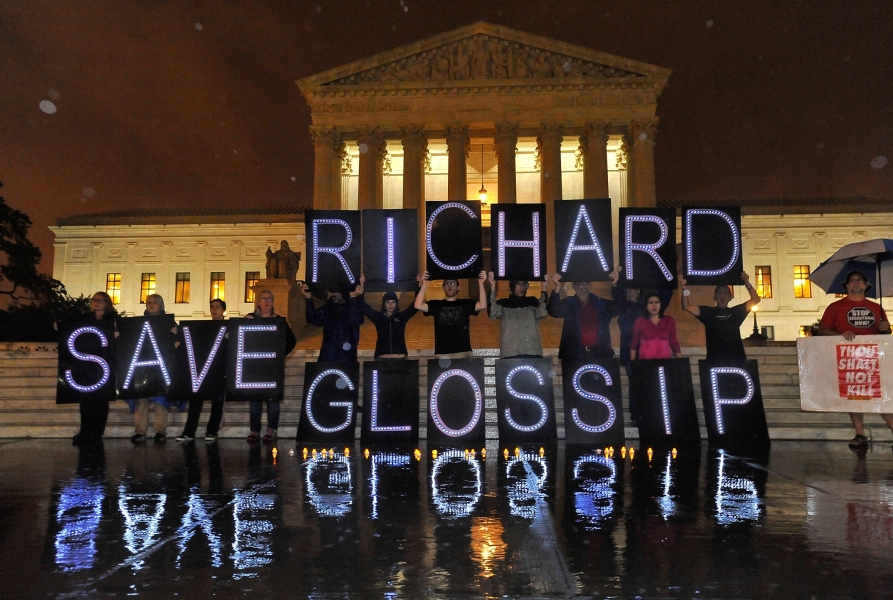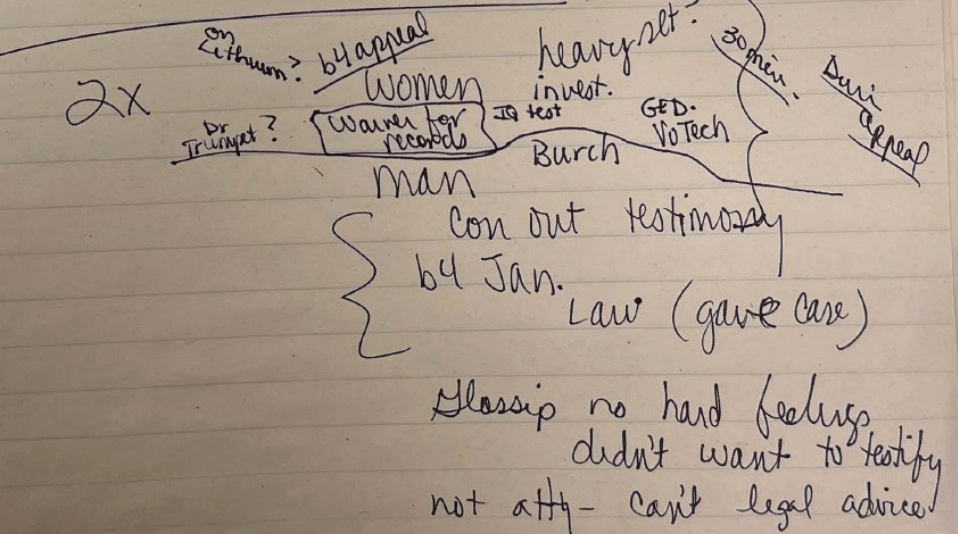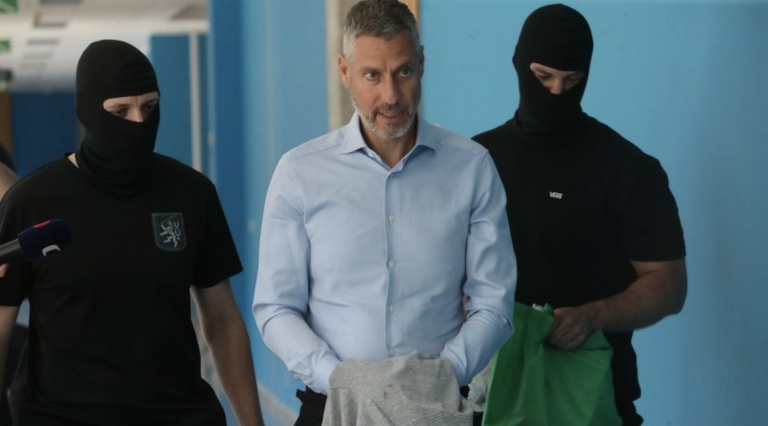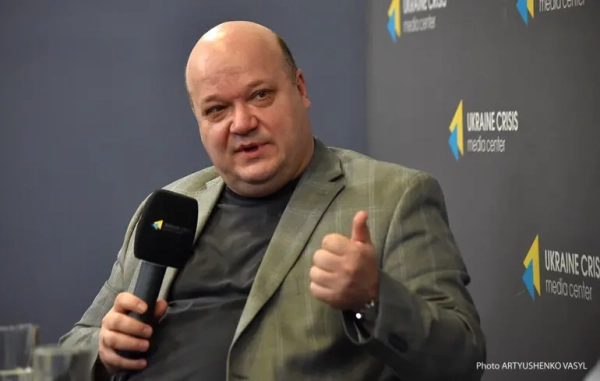
Glossip v. Oklahoma is currently before the Supreme Court — and it is one of the most muddled death penalty cases the Court has faced in a while. Exactly how the justices untangle it will decide whether a man lives or dies.
Richard Glossip is on death row after being convicted of an Oklahoma murder 20 years ago. Now, however, the state’s Republican attorney general says that his trial was unconstitutional and his conviction must be tossed out. The state plans to retry Glossip if his conviction is vacated, but a ruling in Glossip’s favor will get him off death row for now.
SCOTUS, Explained
Get the latest developments on the US Supreme Court from senior correspondent Ian Millhiser.
Email (required)Sign UpBy submitting your email, you agree to our Terms and Privacy Notice. This site is protected by reCAPTCHA and the Google Privacy Policy and Terms of Service apply.
Yet Attorney General Gentner Drummond has struggled to find a legal forum that will actually take the assertion that his trial was unconstitutional seriously. Oklahoma’s highest criminal court refused to accept Drummond’s arguments and kept Glossip on death row. The state parole board, meanwhile, split 2-2 on whether to grant clemency to Glossip, in part because one member of the board had to recuse himself because his wife was the lead prosecutor against Glossip.
Wednesday morning’s oral argument in Glossip only added more confusion to the mix. The two justices who typically take the most hardline positions against criminal defendants, Justices Clarence Thomas and Samuel Alito, appeared determined to toss the case out completely, without ever actually considering whether Glossip’s constitutional rights were violated. They likely have an ally in Chief Justice John Roberts, who seemed to doubt whether any possible constitutional violation in this case actually mattered enough to change the outcome of Glossip’s trial.
Justice Neil Gorsuch, who often votes with the Court’s most hardline members in death penalty cases, is recused from the case for reasons the Court did not disclose. That’s actually bad news for Glossip because he must assemble five affirmative votes to toss out his conviction in order to prevail, and the loss of even a skeptical justice is one less potential vote for him.
All three of the Court’s Democrats, meanwhile, appeared sympathetic to Glossip’s arguments, and spent much of the case batting down Alito’s proposals to dismiss the case on procedural grounds — though Justice Ketanji Brown Jackson showed some openness to forming an alliance with Thomas to send the case back down to the state courts in order to gather additional evidence.
That leaves Justices Brett Kavanaugh and Amy Coney Barrett, conservative Republicans who asked some questions that appeared sympathetic to Glossip, as the wild cards in this case. It is possible that they could provide the fourth and fifth vote to save Glossip’s life, but far from certain.
The alleged constitutional violation that is before the Court — that prosecutors withheld evidence that a key witness has a serious mental illness, and failed to correct this witness when he lied on the stand — is fairly marginal. It turns on four words in handwritten notes by prosecutor Connie Smothermon that were not turned over to Glossip’s lawyers until January 2023. The state agrees with Glossip’s legal team that these four words reveal a sufficiently serious constitutional violation to justify giving him a new trial.
But while this narrow legal issue, which is the only issue before the Supreme Court, is the kind of legal question that reasonable judges could disagree upon, Smothermon’s notes are only one piece of a wide range of evidence suggesting that Glossip’s criminal conviction is unconstitutional: Oklahoma conducted two independent investigations, both of which concluded that Glossip’s trial was fundamentally flawed.
Among other things, those investigations found that Justin Sneed — the man who actually committed the murder at issue here — was pressured by police to implicate Glossip in the crime. They also show that police and the prosecution lost or destroyed evidence that could potentially exonerate Glossip. And they show that police inexplicably did not question potentially important witnesses or search obvious places for evidence.
Now, however, Glossip’s life likely turns upon whether Kavanaugh and Barrett are moved by the procedural arguments pressed by the Court’s right flank, or by the arguments pressed by both Glossip and the state: That four words in Smothermon’s notes reveal a serious constitutional violation.
Why Smothermon’s notes matter so much
In 2023, prosecutors turned over a box of evidence for the first time to Glossip’s legal team. This box included handwritten notes from Smothermon, which included two significant questions. In the corner of the notes, Smothermon wrote the words “on lithium?” and “Dr. Trumpet?”

Both the state and Glossip’s legal team quickly discovered that these somewhat cryptic notes were quite significant. As the state told the justices in its brief, when Sneed was incarcerated in the Oklahoma County jail, that “jail had just one working psychiatrist in 1997 when Sneed was held there: Dr. Larry Trombka.”
Both Glossip and the state agree that the “Dr. Trumpet” referenced by Smothermon must have been a reference to Dr. Trombka, who was “the only possible treating psychiatrist and the only medical professional at the jail qualified to prescribe lithium.”
The state had also previously withheld Sneed’s medical records from Glossip’s lawyers, and these records “confirm a diagnosis of bipolar disorder with a treatment of lithium at the county jail.”
All of this matters because Sneed was the key witness against Glossip at his trial. He was the only witness who implicated Glossip in the murder, and he did so on the theory that Glossip, who managed a motel where Sneed worked, hired Glossip to kill the motel’s owner.
But Dr. Trombka later said that Sneed’s mental illness could have triggered a “manic episode” that would have made him “more paranoid or potentially violent.” Trombka added that Sneed’s condition was “exacerbated by illicit drug use, such as methamphetamine.” So, if Glossip’s defense lawyers had known about Sneed’s medical diagnosis, they could have argued that Sneed committed the murder because he experienced a serious mental health event, and not because he was coaxed into doing so by Glossip.
During Glossip’s trial, moreover, Sneed did testify that he was given lithium at the jail, but he suggested that he was prescribed it by accident and that he “never seen no psychiatrist or anything.” Thus, Smothermon’s notes do not simply suggest that Sneed lied on the stand — a fact that would have diminished his credibility with the jury — they also suggest that Smothermon knew Sneed was lying and failed to correct him.
The failure to turn over Smothermon’s notes sooner, and Smothermon’s failure to correct Sneed’s testimony potentially violate the Constitution in two ways. In Brady v. Maryland (1963), the Supreme Court held that prosecutors must turn over evidence to the defense that is “favorable to an accused” if that evidence “is material either to guilt or to punishment, irrespective of the good faith or bad faith of the prosecution.”
Additionally, in Napue v. Illinois (1959), the Court held that “a conviction obtained through use of false evidence, known to be such by representatives of the State, must fall under the Fourteenth Amendment.” This rule applies even “when the State, although not soliciting false evidence, allows it to go uncorrected when it appears.” So, by failing to correct Sneed’s false testimony that he never saw a psychiatrist, Smothermon potentially violated Napue.
In any event, the significance of Smothermon’s notes and her alleged violation of Napue appeared to divide the justices. Roberts was particularly skeptical of their relevance, pointing out early in the argument that the defense counsel knew that Sneed had been prescribed lithium, so why does it matter if defense lawyers had also known that this drug, which is used primarily to treat mental health disorders, was also prescribed by a psychiatrist?
Significantly, however, Kavanaugh appeared to break with Roberts on this question. “I’m having some trouble,” he told Christopher Michel, a Court-appointed lawyer tasked with defending Glossip’s conviction because the state would not, with the idea that the jury would be unmoved if they learned that Sneed lied on the stand “when the whole case depended on his credibility.”
Kavanaugh also said that Sneed’s mental health diagnosis creates “all sorts of avenues for questioning his credibility.”
So Kavanaugh, at least, appears open to the argument that Smothermon violated Napue or Brady. But it is still unclear whether five justices agree with this argument. And it is also unclear how they will approach a procedural issue that could doom Glossip’s case.
The procedural problem in the Glossip case
Oklahoma law, like most states and the federal government, places strict limits on anyone’s ability to challenge their conviction once that conviction is finalized and all of the defendant’s appeals are exhausted. Among other things, Oklahoma forbids someone like Glossip from making more than one post-conviction attack on that conviction unless the issues raised in a later proceeding could not have been raised earlier.
These barriers, moreover, are augmented by an Oklahoma state law that required Glossip to present any new evidence he discovered within 60 days of discovering it. So Glossip’s lawyers could not take their time, gather all the evidence they needed to make the best case for their client, and then present it to the courts all at once. They had to present this evidence piecemeal or lose the ability to raise it.
As a result, the case currently before the Supreme Court is Glossip’s fifth legal proceeding challenging his conviction after it was finalized.
Before this fifth proceeding reached the justices, moreover, Oklahoma’s highest criminal court rejected his Brady and Napue arguments, in part because, the court claimed, Oklahoma’s laws limiting his ability to repeatedly challenge his conviction prevented him from raising those arguments. If the Oklahoma court is right about this point, that precludes the Supreme Court from hearing the case, because the US Supreme Court typically cannot overrule a state’s highest court on a question of state law.
Indeed, most of Wednesday’s argument focused on this threshold question — does Oklahoma’s own law prevent Glossip from even raising his Napue and Brady arguments?
The fact that Oklahoma’s attorney general is on Glossip’s side in this case plays an enormous role in the debate over this threshold question. Were Glossip alone in seeking relief, he would probably be doomed. But several justices argued that Drummond has an absolute right to waive the procedural rules that would otherwise prevent Glossip from raising his Brady and Napue claims.
Notably, one of the justices who seemed to agree that Drummond has waived those procedural rules is Barrett, who noted at one point that it is very unusual for a court not to accept such a waiver. Similarly, Justice Sonia Sotomayor argued that there are “100 years of history” where no Oklahoma court refused to honor a similar waiver, suggesting that the state court that heard Glossip’s case made up a one-time-only rule to prevent him from challenging his conviction.
Yet, while at least four justices seemed convinced that the state court should have honored Drummond’s decision to waive the procedural bars to Glossip’s case, it is unclear whether there are five. Kavanaugh, the most likely fifth vote for Glossip, played his cards especially close to his chest, often framing his questions about whether Smothermon violated Napue or Brady with caveats like “if you get past all the procedural bars.”
So the bottom line is that Glossip could prevail, but he’s got a tough road. Assuming that all three of the Democratic justices are on his side, he needs to win over Barrett — who seemed to be with him on the procedural question but who was largely quiet on the merits of his case — while also winning over Kavanaugh, who seemed to be with Glossip on the merits but silent on the procedural question.
Source: vox.com






